Emergency preparedness and remediation
EURANOS, EVANET-HYDRA, EVANET-TERRA, FARMING, MOSES & SAMEN, RECOVER, RESTRAT, RESTORE, STRATEGY, TEMAS, TMT Handbook, WISDOM
| EURANOS - European approach to nuclear and radiological emergency management and rehabilitation strategies (2004-2009) | |
|---|---|
The key aims of the 6th Framework EURANOS project were to collate information on the likely effectiveness and consequences of a wide range of countermeasures and to provide guidance to emergency management organisations and decision makers on the establishment of an appropriate response strategies. EURANOS also enhanced advanced decision support systems, in particular RODOS, through feedback from their operational use; created regional initiatives leading to information exchange based on state-of-the-art information technologies and to create guidance to assist Member States to develop a framework for the sustainable rehabilitation of living conditions in contaminated areas. The project maintained and enhanced knowledge and competence through emergency exercises, training and education.
| |
| STRATEGY - Sustainable restoration and long-term management of contaminated rural, urban and industrial ecosystems (2000-2003) | |
|---|---|
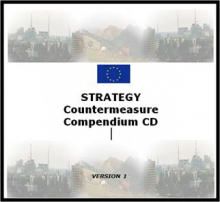 | The STRATEGY project aimed to produce a documented framework for sustained restoration of areas contaminated by radioactivity. The outputs were: the first interactive web mounted countermeasure database; guidance on ethical and social considerations for restoration management; a framework for non-market cost benefit analyses within countermeasure strategies. A spatially implemented model brought together all these outputs with the SAVE model to aid the identification of optimal remediation strategies. The project worked in close collaboration with the FARMING, WISDOM and RESTORE projects. For example, the outputs of STRATEGY were used and evaluated within the EC funded FARMING stakeholder network and the countermeasure database developed within STRATEGY was subsequently extended and improved in the EURANOS project (see above).
|
| FARMING - Food and Agriculture Restoration Management Involving Networked Groups (2000-2003) | |
|---|---|
 | The aims of this project were to: create a European network initially in five Member States and involving more than 50 individual stakeholders, to assist in the development of robust and practicable strategies for restoring and managing contaminated rural areas sustainably; to carry out a comprehensive evaluation of these strategies under the diverse range of food production systems encompassed by the participating Member States and to establish lines of communication between those organisations who have not hitherto collectively considered the implications of contamination of the food chain.
|
| WISDOM - Workshop to extend the Involvement of Stakeholders in Decisions On restoration Management (2002-2004) | |
|---|---|
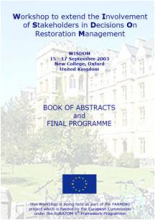 | The overall objective of the workshop was to provide a forum to promote the wider application of stakeholder involvement in developing an holistic approach to restoration strategies within Europe. Senior representatives from government and non-government organisations from all Member States were invited to the workshop to learn about current advances in stakeholder engagement in decision making, particularly with regard to sustainable restoration of rural areas following a nuclear accident. The workshop provided an opportunity for stakeholders from the FARMING network (see above) and those working on state-of-the-art restoration strategies within the STRATEGY project to present key aspects of their activities. It also provided a platform for the future expansion of the FARMING network and exploitation of the STRATEGY framework in Europe. The proceedings from the workshop were published in a special issue of the Journal of Environmental Radioactivity Stakeholder involvement in post accident management.
|
| TMT Handbook - Triage, monitoring and treatment - handbook for management of the public in the event of malevolent use of radiation (2006 - 2009) | |
|---|---|
The main objective of this 6th Framework project was to make a practicable handbook for the effective and timely triage, monitoring and treatment of people exposed to radiation following a malevolent act. European national emergency response plans had previously focused on accidents at nuclear power plants and other nuclear installations. However, the possible threats by disaffected groups shifted the focus to also prepare for terrorist acts involving the malevolent use of ionising radiation that are aimed at creating disruption and panic in society. The project produced a handbook: “Triage, Monitoring and Treatment of people exposed to radiation following a malevolent act” to address the need for consistent, coherent and harmonized guidelines across Europe.
| |
| MOSES - Off site emergency management and SAMEN - Off site emergency management and restoration of contaminated environments (2001 - 2005) | |
|---|---|
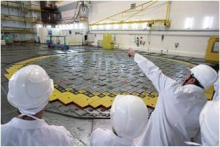 | These two 5th Framework thematic clusters aimed to provide platforms for information and data exchange between 'complimentary' projects.
|
| EVANET-HYDRA Off site emergency management (2001-2004) | |
|---|---|
 | The EVANET-HYDRA project focused on the assessment of the main features of selected state-of-the-art computerised Decision Support Systems (DSS) for the off-site management of freshwater ecosystems contaminated by radionuclides. It had four objectives: to review and assess the DSSs to ensure that they comply with expectations and needs of potential users; to identify and classify the approaches of the different DSSs; to define their application domains and to synthesize the experience gained for improving the DSSs; and for the rational utilization of the existing products.
|
| EVANET - TERRA (2001-2004) | |
|---|---|
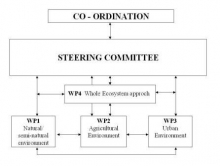 | The 4th Framework project EVANET-TERRA focused on the assessment of Decision Support Systems (DSSs) adopted by a number of EC projects to assess transfer for three major terrestrial ecosystems: natural/semi-natural, agricultural and urban. Once evaluated, the codes were combined to derive a holistic ecosystem approach covering the terrestrial environmental transfer of radionuclides leading to the exposure of man. The remediation strategies considered were critically evaluated and recommendations for their application in Europe defined. Different scenarios were constructed to allow a direct comparison of the outcome of the codes such as activity concentrations, doses and dose reductions due to different remediation actions. Organisations and agencies involved in environmental protection were included to ensure that the software met expectations of different potential end users.
|
| RESTRAT - Restoration strategies for radioactively contaminated sites and their close surroundings (1996-1999) | |
|---|---|
A lot of nuclear facilities in Europe have reached the end of their as designed life expectancy. While the installations will be subject to controlled decommissioning, in many cases contamination has been dispersed over the site or is contained by methods inappropriate for long-term storage. The clean-up of these parts of the sites by conventional techniques is expensive and may be questionable on the basis of cost-benefit evaluations. These problems are well known e.g. the large clean-up programmes of former military sites in the U.S. The U.S.experience shows that the application of alternative techniques, e.g. in-situ remediation is hampered by the lack of transparent risk assessments considering the exposure of the present and future populations and of the workers. The main objective of this co-ordinated project was to develop a transparent and robust method for evaluating and ranking restoration strategies for radioactively contaminated sites (carried out under the Fourth Framework of the Nuclear Fission Safety Programme of the EU). Four contaminated sites were studied in detail.
| |
| RECOVER - Relevancy of Short Rotation Coppice for the Remediation of Contaminated Land (1997-1999) | |
|---|---|
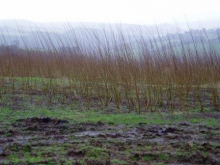 | This project was set up to evaluate the feasibility of short-rotation coppice for energy production as a contaminated land management option.
|
| RESTORE - Restoration of severely contaminated territorities: Restoration strategies for radioactive contaminated ecosystems (1996-1999) | |
|---|---|
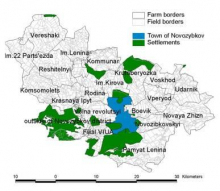 | Using experimental data collated after the Chernobyl accident the RESTORE project focused on the development of an environmental decision support system (EDSS) which could be applied to radioactive contaminated areas in the former Soviet Union. The environmental management system created (RESTORE-EDSS) was based on an understanding of the processes and routes by which radioactivity is transferred (to human foodstuffs) in a variety of ecosystems, and considered both internal and external doses. The RESTORE-EDSS was designed to assess and direct the use of countermeasures to reduce radiation doses to humans, taking into account minimisation of adverse socio-economic effects. Thus an important objective was the provision of strategies to enable the affected population to reduce their own dose. The SAVE-IT model was used to predict the transfer of radiocaesium in the Chernobyl exclusion zone. The project was successfully linked to a variety of complementary INCO-Copernicus and ISTC projects which enabled interaction and collaboration with NIS partners in Russia, Ukraine, Belarus and Kazakhstan.
|
| TEMAS - Techniques and management strategies for environmental restoration and their ecological consequences (1994-1998) | |
|---|---|
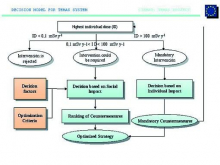 | The main aim of TEMAS was to develop a management tool to assist with decision making for restoration strategies when intervention is required in different environmental systems (urban, agricultural, semi-natural and forest) following a nuclear accident. |
